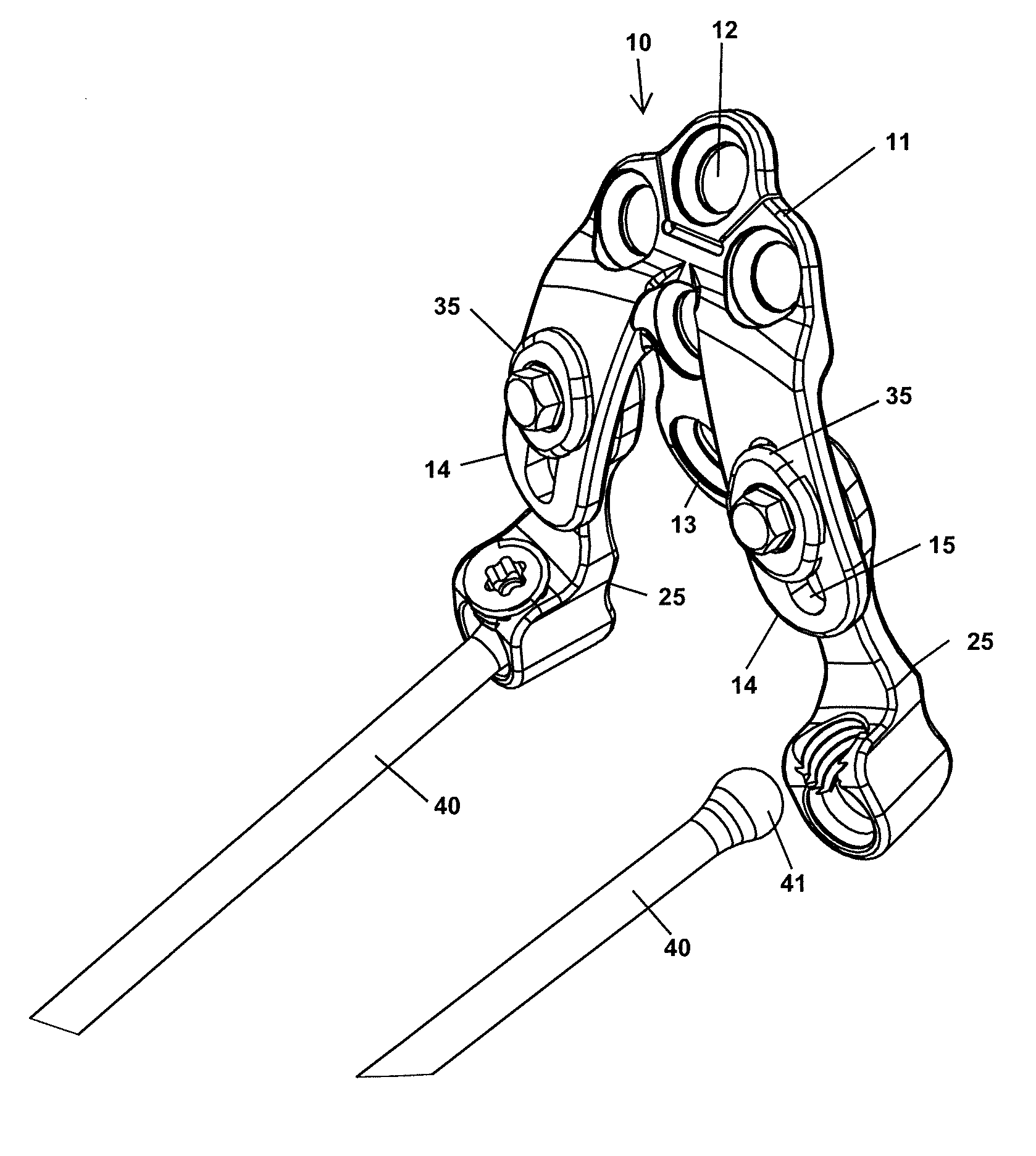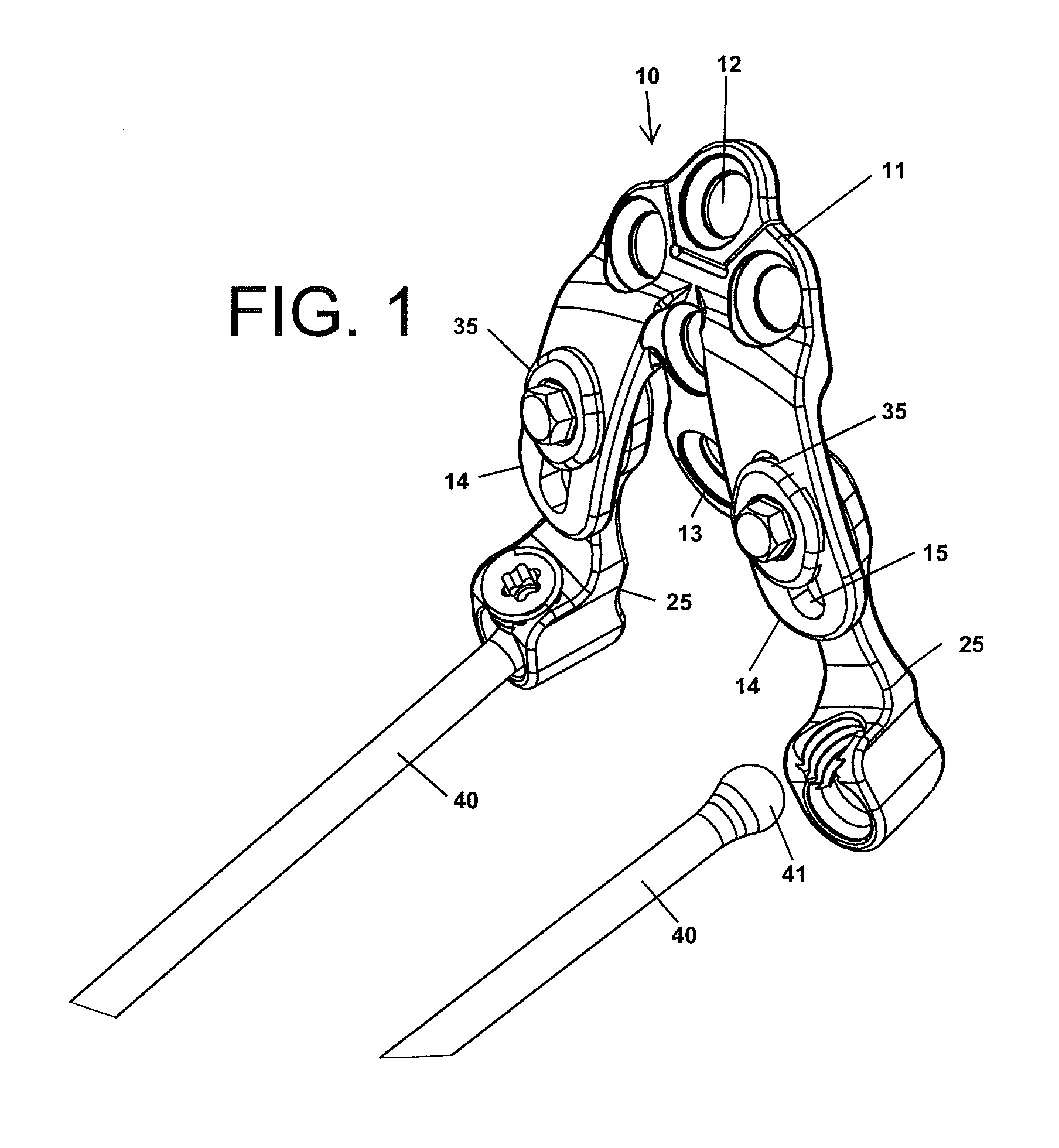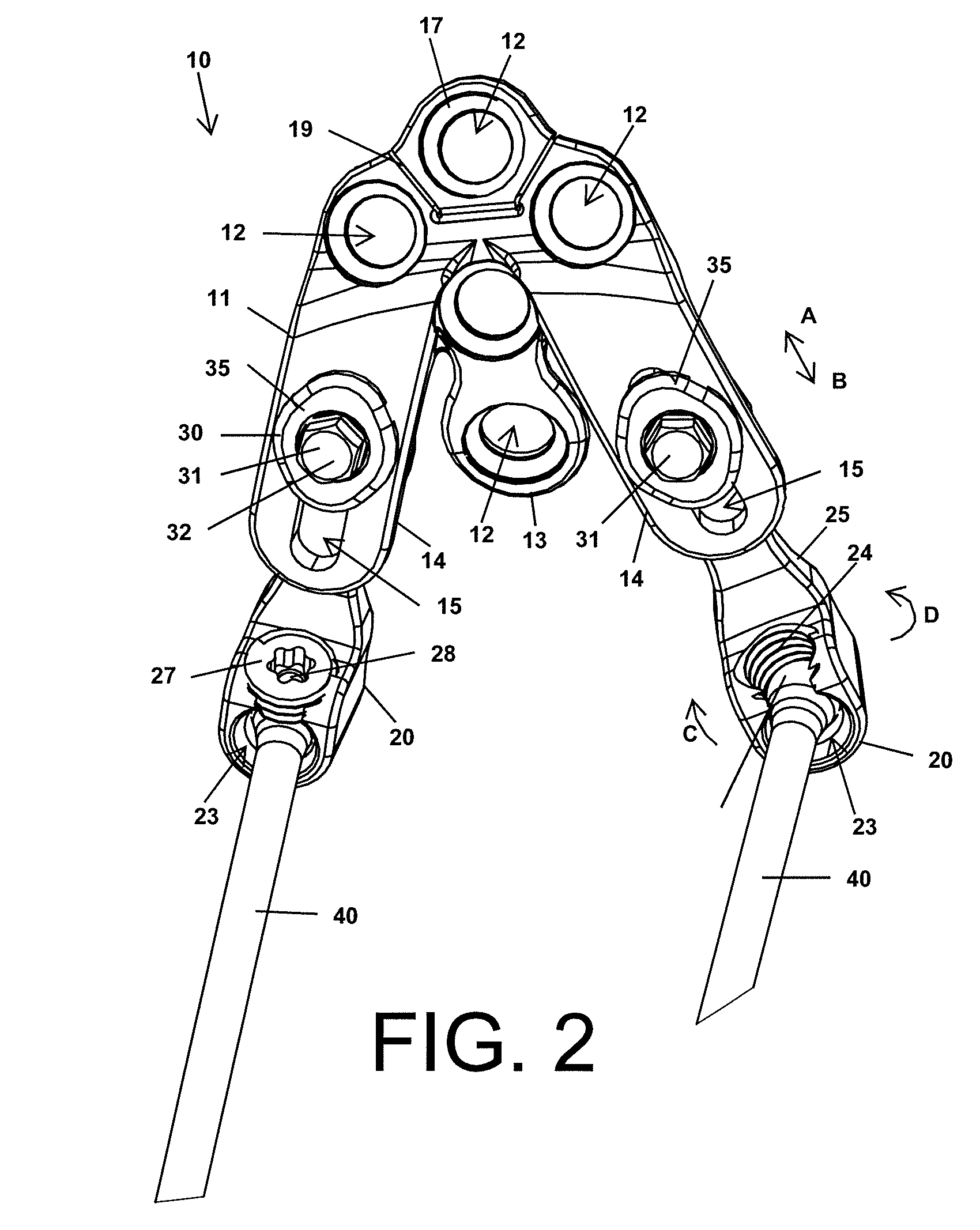Occipital Plate for Spinal Fusion
a technology of occipital plate and spinal cord, which is applied in the field of occipital plate for spinal cord fusion, can solve the problems of fatigue of rod material, long screws and large coupling assemblies that cannot be mounted directly to the skull without undue risk, and many coupling assemblies that would prove extremely and unduly cumbersome, etc., and achieves convenient capture of spinal rods, further adjustment of positioning, and further adjustment of device
- Summary
- Abstract
- Description
- Claims
- Application Information
AI Technical Summary
Benefits of technology
Problems solved by technology
Method used
Image
Examples
Embodiment Construction
[0073]The novel plate devices disclosed herein are better designed to receive and hold spinal rod members than prior art plate devices configured for mounting to the occipital region of the skull. For instance, to illustrate the contrast between the presently disclosed occipital plate devices and the prior art, a prior art device that requires spinal rods to be bent substantially to be received by the plate device attached to the skull is shown in FIG. 1. A clamping device 3 on each side of the plate 2 secures an end of a spinal rod 5 parallel to the plate surface. The clamping device may include a threaded set screw that clamps against the spinal rod, a bracket that is secured against the rod, or the like. A series of pedicle screws 7 secure the rods 5 to the vertebrae. Since the plate 2 and clamp devices 3 are mounted transverse to the axis of the spine, the spinal rods 5 must be bent outward away from the spine in order to connect to the plate 2.
[0074]The plate devices provided h...
PUM
 Login to View More
Login to View More Abstract
Description
Claims
Application Information
 Login to View More
Login to View More - R&D
- Intellectual Property
- Life Sciences
- Materials
- Tech Scout
- Unparalleled Data Quality
- Higher Quality Content
- 60% Fewer Hallucinations
Browse by: Latest US Patents, China's latest patents, Technical Efficacy Thesaurus, Application Domain, Technology Topic, Popular Technical Reports.
© 2025 PatSnap. All rights reserved.Legal|Privacy policy|Modern Slavery Act Transparency Statement|Sitemap|About US| Contact US: help@patsnap.com



